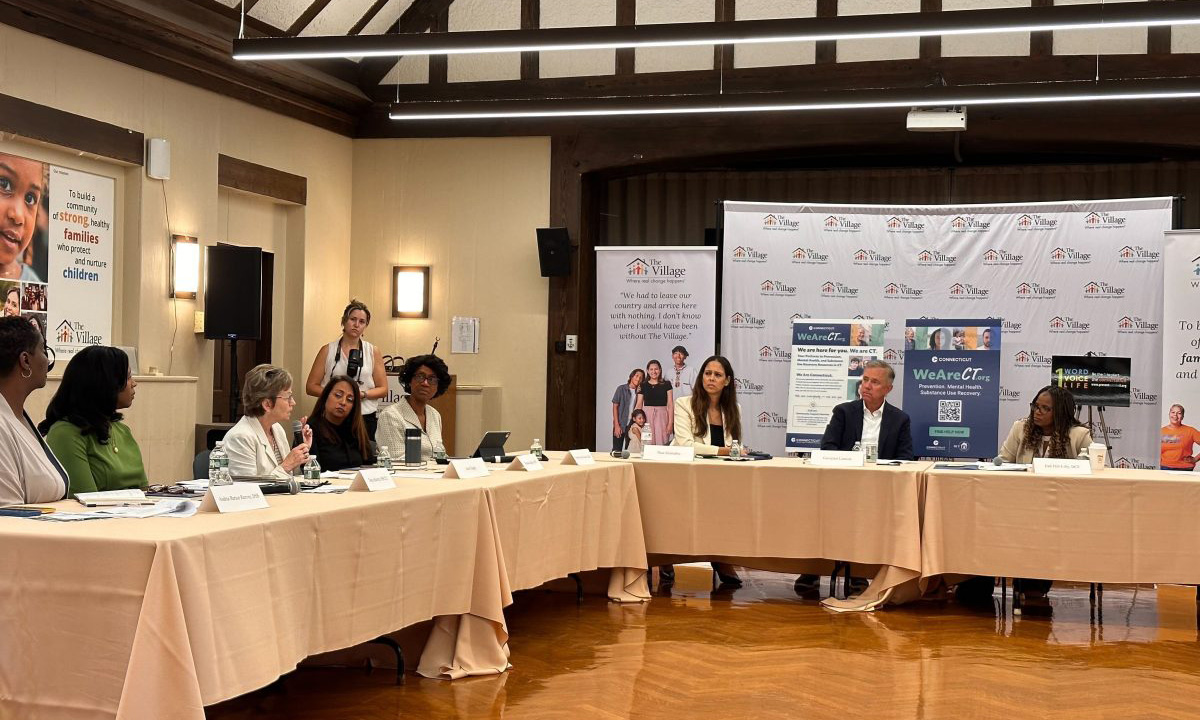Youth Suicides Are Up in Connecticut, and Officials Are Broadening Response
In Connecticut, 11 children have died by suicide so far this year, nine of those in the past few months.

Get stories like these delivered straight to your inbox. Sign up for The 74 Newsletter
A few years ago, Dr. Steven Rogers, a physician in the emergency department at Connecticut Children’s Medical Center, started a new initiative. He wanted to screen every child age 10 and up who passed through the department for suicide risk. That’s around 15,000 kids a year.
“There’s lots of stigma around this question,” Rogers said. “I’d rather be able to identify kids who are low risk and need help versus when they’re an imminent risk or have already made an attempt.”
In Connecticut, 11 children have died by suicide so far this year, nine of those in the past few months. To put that in perspective, just six children 17 and younger died by suicide in all of 2023.
“I hope this isn’t a canary in the coal mine,” said Gov. Ned Lamont in late August at a roundtable event on youth suicide.
There were no clusters of deaths, according to the Office of the Child Advocate, and deaths were distributed across the state, as well as among races and genders. The children were between the ages of 13 and 17.
“We have a problem,” Sarah Eagan, Connecticut’s child advocate, said during the roundtable. She said most children who die by suicide in Connecticut die by asphyxiation, and in recent years, the age of those children is skewing younger.
“We have work to do,” Eagan said, “and that work is not done until no child is bereft and alone, not knowing where to call, and there is no parent who … can’t sleep not knowing if they’re doing the right thing for their child.”
For Rogers, the summer’s high numbers were especially hard to take in.
“It feels like a failure, especially for somebody who has committed a good part of their career to identifying kids at risk,” he said.
Connecticut Children’s effort is just one example of a broadened push to respond to the youth mental health crisis in the state, one that has become increasingly urgent since the COVID pandemic. But even before the pandemic, Rogers was adamant that the screening tool was needed. Suicide is the No. 2 cause of death in children 10 and older, trailing unintentional injuries.
And so, since August 2019, clinicians have been screening children 10 and older in the emergency department at Connecticut Children’s in Hartford, asking them a series of questions to assess their suicide risk, after their parent or caregiver is asked to leave the room. The process takes less than a minute, Rogers said.
“Once you screen a kid positive that you didn’t suspect would be positive … I don’t want to be too dramatic and say it’s life-changing, but it is an eye-opener.”
Kids who do screen positive are directed toward appropriate mental health services. For some high-risk children, that might be an inpatient program. For others who are not in immediate danger of self harm, a counseling session or further evaluation might be scheduled in the comfort of their home.
Of the 75,000 children that the hospital has screened in the past five years, 18% were positive for risk of suicide. That’s nearly 1 in 5 children. Most of those children came to the emergency department for a behavioral health issue in the first place. But an extraordinary number — around 6,000 children — initially came in for a medical issue like an asthma attack or a broken bone and ended up screening positive for suicide risk.
Rogers says he is fighting a perception that simply discussing suicide with children might plant a seed of suicidal ideation. But according to Rogers, this is a misnomer.
“It plants the seeds of hope,” he said.
In fact, he said, the screening tool can at the very least inform children that there is a place they can go that will ask them if they are considering suicide, a place where they can also get help. Because, he said, all too often, caregivers never have these conversations with children at all.
Rogers often thinks about the story of an 11-year-old girl who came to the hospital for a medical issue. To the clinician’s surprise, and to her mother’s, she screened positive for suicide risk. The mom asked her daughter — weren’t they best friends? They were, the girl told her mother. But, the mother said, didn’t best friends tell each other everything? “And she turned to her mother and just said, ‘Well, you never asked.’ “
Get stories like these delivered straight to your inbox. Sign up for The 74 Newsletter

;)